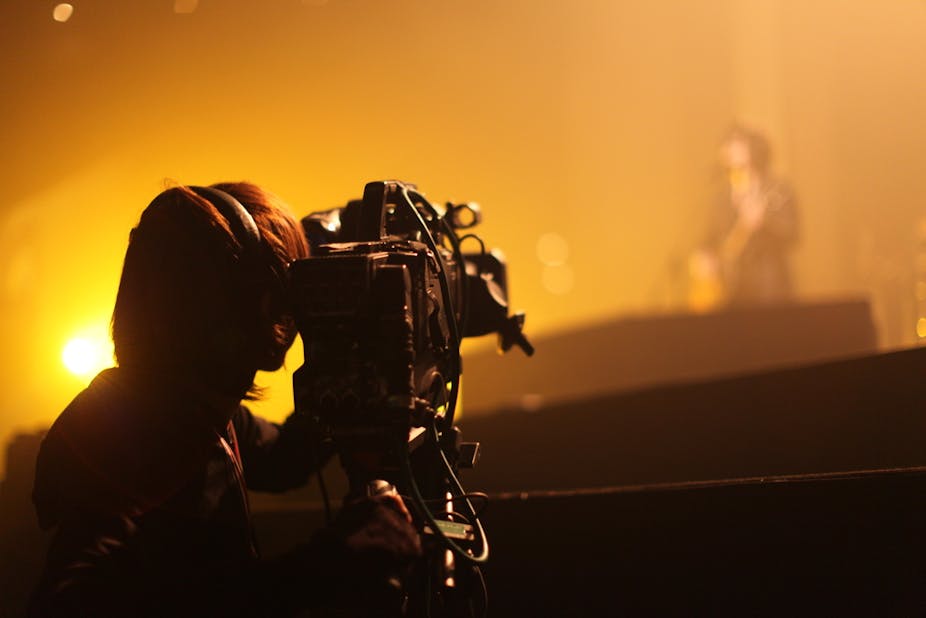Digital production and distribution has made it easier to access music than at any other time in human history.
But no one starts at “A” in iTunes or on YouTube’s homepage and listens to everything. There are not enough hours in the year for that - and besides, that’s not how internet music works. Unlike the passive pleasure of experiencing music on radio or television broadcasts, online delivery requires active swimming through a sea of content.
In order to find what you want online, you usually have to already know something about it.
Broadcast is still a place to find (new, old and quirky) music in Australia in 2013. And we’re somewhat unusual in this regard. In the US, MTV has moved its focus away from music videos and towards the Jersey Shore, while YouTube recently announced it will host its own music video awards to rival the Twerk-promoting former super giant.
The UK lost its long running music broadcast success, Top Of the Pops, in the mid 2000s. And while there were some rivals for charity and Christmas specials, the recent unearthing of Jimmy Saville’s past may have permanently changed the way music, television and youth is considered in that country.
Back home, however, broadcast music television like the ABC’s rage remains an important cultural touchstone. Since April 1987 rage has been on air on Friday and Saturday nights (and into the following morning).
It’s often the first place that local artists get to show themselves to the broader Australian public. Sure, this first airing might be at 2 am, but it’s still an opportunity to be found by a concentrated audience above all the other noise. The problem with the internet is finding quality within the quantity.
rage’s commitment to providing a space for good music (as well as music that may be not so good, or still in development) is crucial to its inclusion on the national public service broadcaster.
But it is also something that the program has been criticised for. As part of his Musical Jamboree series for SBS in 2002, John Safran claimed ‘even a dog can get a clip on rage’, going on to prove it by submitting a clip and song that had been made in an afternoon. His point was to challenge rage’s apparently vague quality control, and while the program did broadcast his shaky image (literally created by Safran strapping a camera to his dog’s head), it was a choice the show’s producers stood by.
Speaking in 2010 as part of a talk at the Australian Centre for Moving Image, producers/programmers basically argued that Safran helped pay for rage with his income tax, just like all Australians. He and his dog were entitled to their 2 minutes of fame.

Stunts and one hit wonders aside, rage has historically been the first place to feature what are now considered to be incredible international success stories. Gotye really was “Somebody that (rage) Used to Know” before the Grammys came calling.
rage has also become a place we look to during significant periods of change for the local industry.
When Chrissy Amphlett of The Divinyls died in April this year, rage broadcast a tribute on ABC TV as well as facilitating a second screen community online with the Twitter hashtag, #WatchingRage. A celebration and wake that was both passive and active, it soon proved to be a way for ordinary music lovers to pay their respects as well as recall material that they may not otherwise have remembered or seen before.
Watching rage has become a ritual for many Australian musicians and enthusiasts. It starts with getting caught in the ‘rage Trap’ - what the program’s producers affectionately call the process of staying up much later than expected due to ‘just wanting to see what clip is next’.
The ritual can even extend to forming a band and making new music, as happened with Queensland trio, The Grates.
rage’s regular ‘guest programmer’ segment also provides an internationally unique approach to music broadcasting. With the absence of a regular host, the segment allows the audience to make personal musical connections with the featured artists that might not otherwise come out in an interview. As a result, musical treasure (and trash) is revealed by both local and international artists.
Notably, this year’s rage ‘Election special’ let voters see a different side of pollies Anthony Albanese, Julie Bishop and Adam Bandt, as they (or at least their minders), recommended Madonna, The Pixies, The Red Hot Chili Peppers and Nirvana.
Music television like rage may now be supported by online delivery and second screen viewing (including Twitter, Facebook and the rage interactive App), but the primary broadcast allows audiences to simply enjoy passive musical emersion for its own sake.
The program’s strength is its passion and unusual curating, and it remains an important way to deliver audiences and artists to the next medium.
This is the final piece in our five-part series looking at the contemporary music industry. Click the links below to read the others:
Music sales are waning but don’t blame the pirates
Music streaming revenue structures stacked against artists

